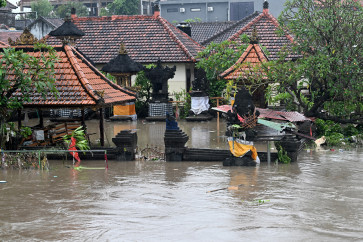Popular Reads
Top Results
Can't find what you're looking for?
View all search resultsPopular Reads
Top Results
Can't find what you're looking for?
View all search resultsWeak revenue collection the real problem, not deficit
If the budget is ever to be credible and sustainable, the performance of the tax system must be significantly improved.
Change text size
Gift Premium Articles
to Anyone
T
he 2018 budget proposal calls for Rp 2.20 quadrillion (US$165 billion) in spending and requires the government to run a Rp 326 trillion deficit. With an aggressive assumption of 5.4 percent growth in gross domestic product (GDP), this deficit translates to 2.2 percent of GDP.
This figure is significantly lower than the estimated 2.9 percent deficit this year, which comes within a hair’s breadth of breaching the legal limit of 3 percent.
Some analysts and political figures have raised concerns over the matter of persistent deficit and an ever-increasing public debt. They pointed out that within the first 2.5 years of the Jokowi administration, the current government has accumulated the same amount of debt that took the previous administration five years to reach.
The sheer level of debt, which stood at Rp 3.78 quadrillion as of the end of July, makes some people nervous and they accuse the government of wasting a lot of money in paying interest on all that debt. The opposition has even deemed the public debt situation as an “emergency.” The standard government response usually falls along the following lines: “The level of debt is not the appropriate measure to judge the fiscal condition of the country; rather, it is the size of debt relative to the size of the economy.
So long as the public debt-to-GDP ratio is kept below the statutory threshold of 60 percent, we should not be too concerned. At 28 percent currently, the rate is not even half that limit. This means we will be able to pay off all those debts, and the country will do just fine going forward.”
The government is also keen to point out that the spending is being used for good causes such as education, health, infrastructure building and other productive activities. This focus on productive spending will help boost the nation’s economy much faster in the future, and therefore the use of debt is justified.
While the government is correct in both its counterarguments, the complete picture of the debt situation is neither that simple nor that encouraging. There are two issues that are rarely addressed when the government or the opposition discusses the debt problem. The first is debt growth relative to GDP growth, and the second is debt growth compared to revenue growth.


















